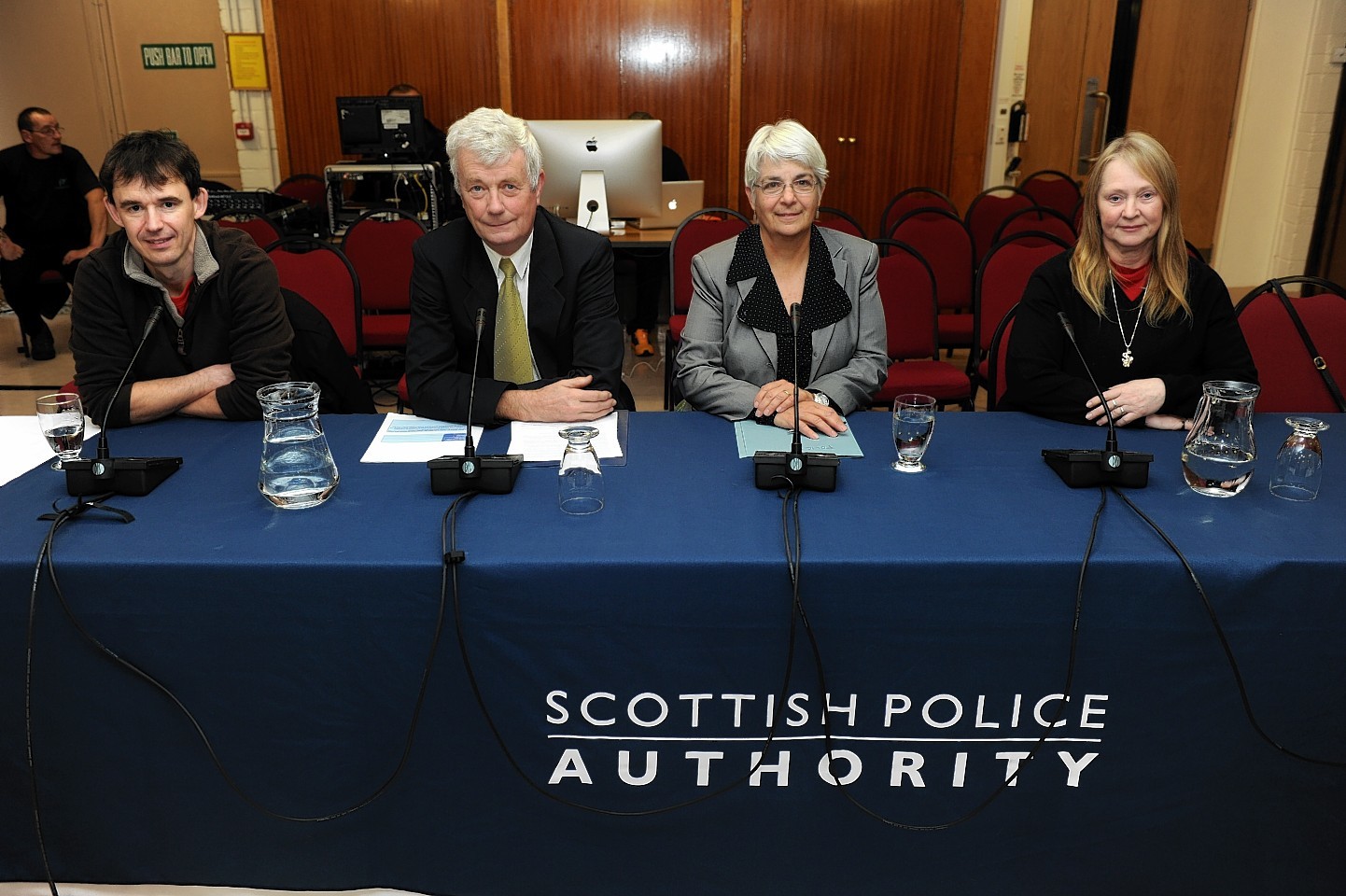The presence of armed police on the streets of the Highlands has created an atmosphere of suspicion and fear, residents told the force yesterday.
Scottish Police Authority (SPA) chiefs heard the controversial policy had put up barriers between officers and public, and that its introduction and management had been poorly communicated.
Opponents – and one supporter – of the move were asked to air their views on behalf of the north and north-east community yesterday as the SPA’s national inquiry into the issue reached Inverness.
They included former Highland Council employee James Miller, who said the sight of armed officers attending routine incidents sent out the wrong message.
Mr Miller, who lives on the Black Isle, said: “If you’re a bystander you’ll assume he’s armed for a reason, not because he’s attending a minor parking offence.
“That is a problem which has not been helped by the lack of communication with the public about what is going on.”
The issue has been the subject of intense national debate since it emerged that 275 officers had been given permission to carry guns on routine patrols in Scotland.
Opposition has been particularly strong in the Highlands and islands, where people have expressed horror at the idea of armed officers in places with low levels of crime.
During yesterday’s third and final public session at Merkinch Community Centre in Inverness, all four members of the public told the panel that they had only found about armed officers on the streets through media reports.
Three said they were against the practice because it sent out the wrong message about the region.
But one ex-military police officer said the policy was justified.
Carol Hutton, a former Canadian military police officer, said she had faith that firearms officers “would not be viewed as a threat to anyone”.
Ms Hutton, of Crathie, Aberdeenshire, added: “I live near Balmoral so we’re used to seeing armed police, MoD police and the special branch chaps who guard the Royals and there’s never any concern about them.
“Police management are in the best place to decide what is operationally right. Routine operations can change in the snap of your fingers.”
Her views were at odds with those of Caithness resident Sharon Pottinger, who told the panel she was a disappointed by Police Scotland’s perceived “one size fits all” policy.
“Caithness is not Glasgow,” she said.
She said: “Guns change the dynamic between police and public completely.
“I live in Caithness where we need to put up with the presence of the MoD police who have been known in the past to be heavy handed, so it’s fair so say we’re sensitive about these issues.”
And there was praise for the Press and Journal’s coverage of the issue.
Inverness man Stephen Davison said: “I only became aware of the issue through the media, specifically from reports in the Press and Journal.
“I think the reports were perfectly fair and were only expressing the concerns of the politicians and the public about what was going on.”
Councillor David Alston, deputy leader of Highland Council, and Graeme Ednie, vice-chairman of the Scottish Police Federation also addressed the panel, chaired by SPA board member Iain Whyte.
The SPA has received around 200 responses from individuals and groups wishing to express their views on the debate.
A report will now be prepared by Mr Whyte to be presented to the SPA board on December 17.
Chief Constable Mr House will be questioned on the inquiry’s findings at that meeting.
